Oxalis, the national symbol of Ireland, has excellent decorative qualities. In the culture, the genus, which was named due to the slightly sour taste of the leaves, is represented by both garden and indoor odds, which can often be seen on the windowsills of the apartments, since caring for acid at home is quite simple.
Material Content:
Species, varieties and their description
Among the representatives of the genus, annual, perennial plants with tuberous and bulbous root systems are noted. Finger or ternate leaf plates of green, purple or burgundy tones in the evening fold and open only with the arrival of the morning. Small flowers also close on cloudy days and at night. The color of the petals may vary depending on the particular variety.
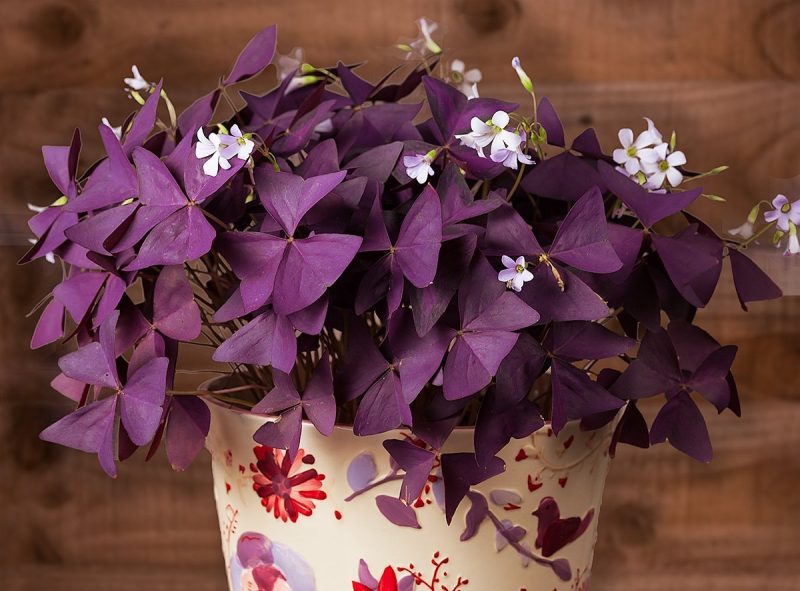
In nature, there are about 800 varieties of sour, among which 2 species are most popular as indoor plants:
- Triangular acid (also known as purple acid) is a variety represented by stunted bushes with purple tri-lobed leaves and a tuberous root system. Small flowers are painted in pink, white or lilac tones.
- Four-leafed sorrel - a distinctive feature of the species are four-lobed leaves, which have a light green color, against which brownish midpoints stand out. During prolonged flowering, raspberry inflorescences can be seen.
Growing and caring at home
Although indoor flower acid is considered an undemanding culture, it still needs to create certain conditions of maintenance and take care measures.
Lighting
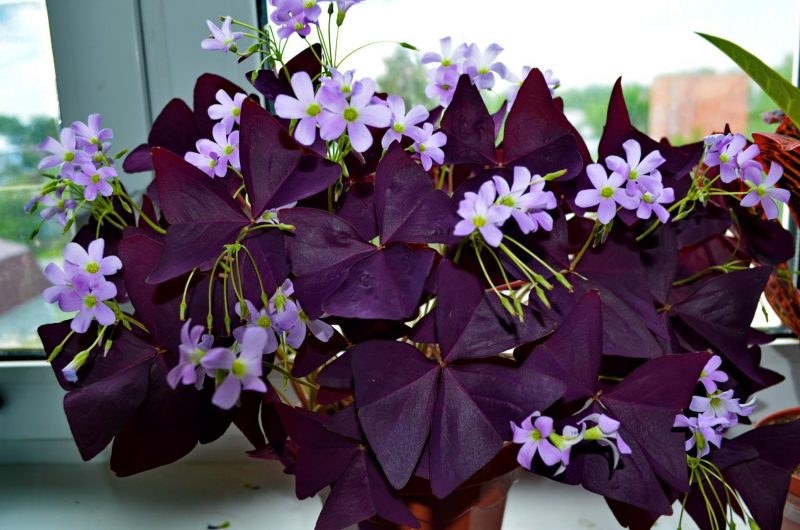
Kislitsa loves good lighting with lots of ambient light. The best place to place the pot will be window sills of western and eastern orientations. On the southern windows, the flower must be protected from the rays of the scorching dining sun.
Temperature mode
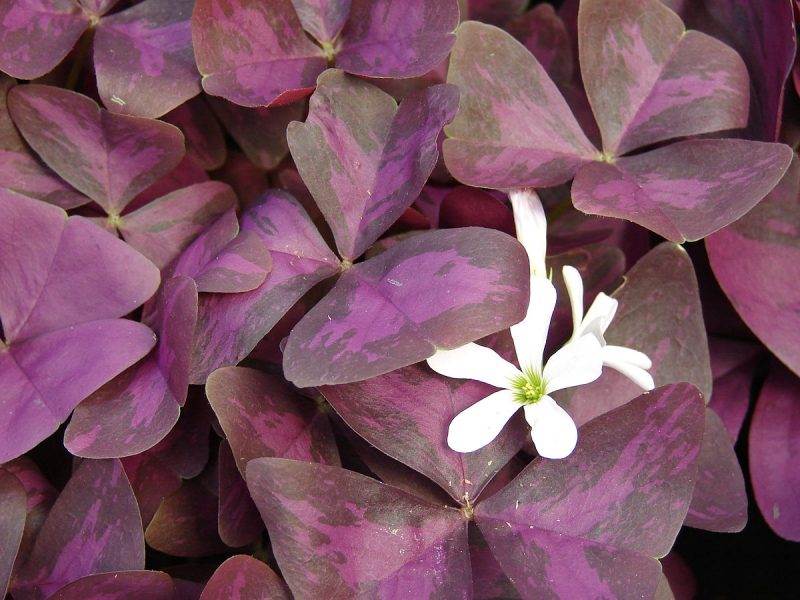
It will not be difficult to ensure an optimal temperature regime of 22-25 ° C during the period of intensive development. But in the winter season, oxalis needs cooler air with temperatures of 12-18 ° C, at which flower buds are laid.
Soil requirements

Oxygen is undemanding to the composition of the soil and grows well in the acquired universal soil. If the grower wants to prepare the substrate on his own, then he will need one part of turf, peat, leafy soil and sand, which will make the soil mixture light and air- and water-permeable.
Humidity
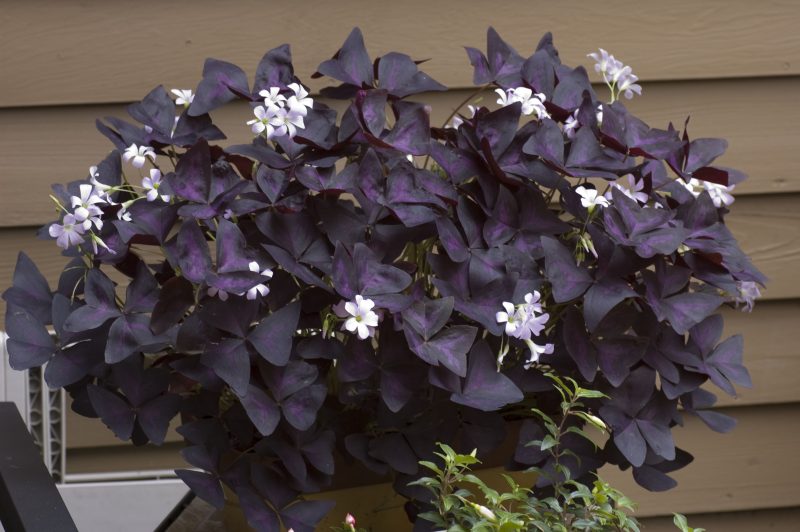
Spraying can be carried out only in the summer season with severe air dryness with either stagnant or boiled water. The rest of the time, the acid does not need an artificial increase in humidity.
Watering
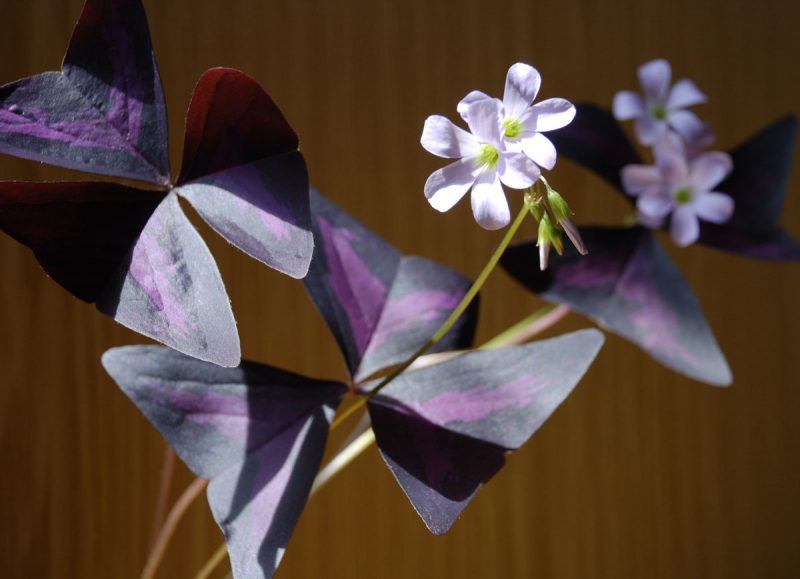
In the spring-summer period, the potted culture is watered abundantly, but it is necessary to avoid stagnation of water in the root system. With the advent of the fall season, the frequency and volume of humidification is reduced. In winter, watering is minimized so that the earthen lump remains barely wet.
Fertilizer and fertilizer
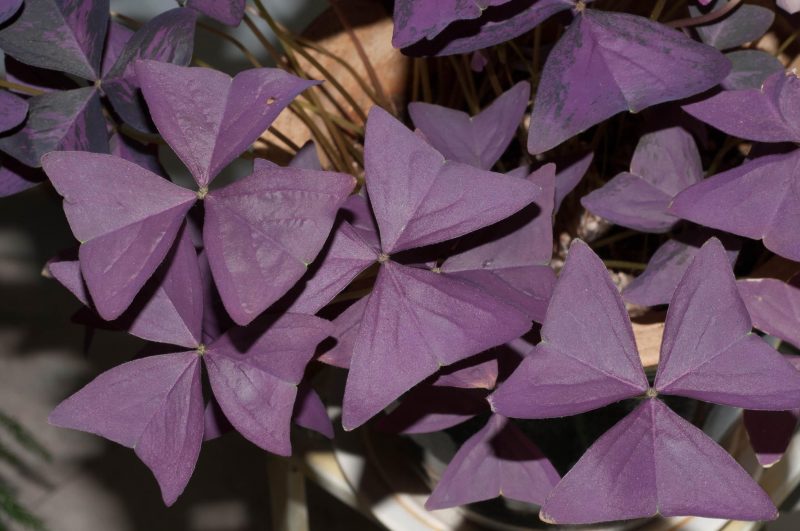
From mid-spring to late summer, it is recommended to feed the sour acid to ensure prolonged flowering and strengthen immunity. As dressings, you can use liquid mineral complexes for flowering plants. The optimal frequency of fertilizer application is 2 times per month.
Caution! Do not resort to the use of organics: due to the high concentration of nitrogen, flowering can be sparse, and the green mass is very dense.
Plant transplant
Young plants are recommended to be replanted annually. After they reach four years of age, the interval between procedures can be increased to 2-3 years.
When transplanting, which is carried out in the spring, after the resumption of the growing season:
- A fairly wide pot is selected, which will contain several tubers or bulbs to produce a lush bush.
- At the bottom there is a drainage layer made from improvised materials - broken brick, gravel.
- A flower with an old earthen lump is being transferred for drainage.
- The resulting voids are filled with fresh substrate, previously calcined in the oven.
- The soil is slightly compacted and moistened.
Rest period
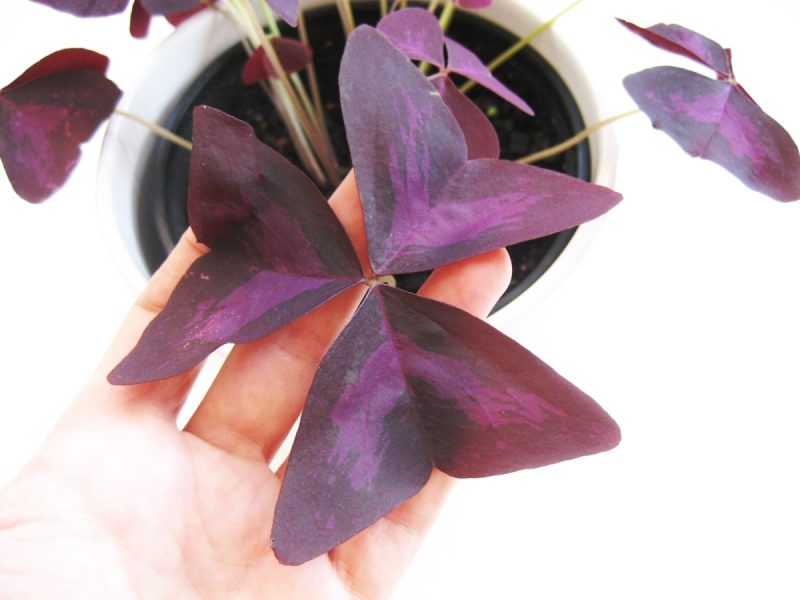
The developmental stop or fall of foliage in the autumn period indicates the beginning of the stagnation phase, when the flower needs to be moved cooler to the room, where it will “rest” and gain strength. At this time, watering is practically stopped. After the resumption of the growing season, when new shoots begin to form, the sour acid should be returned to a constant place of growth.
Propagation of sour (Oxalis)
Typical species can be propagated by seed method. For the cultivation of varietal flowers, a vegetative technique is used.
Seed way
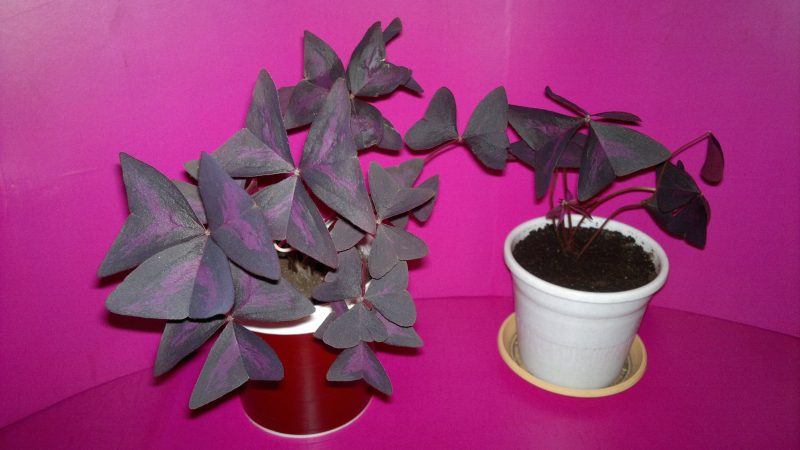
With this method, sour material sown in a store is distributed over the surface of a substrate made up of sheet soil, peat and sand in a 4: 1: 1 ratio. The container is covered with glass and installed in a bright room with a temperature in the range of 16-18 ° C. After 10-30 days, during which the crops are moistened and aired, seedlings appear. Diving into separate containers is carried out when the seedlings form 2 pairs of true leaves.
Kids
The most productive and popular transplant method when:
- Children are separated from the maternal tuber or bulb.
- Planting material of several pieces is planted in separate pots that move into a shaded and cool room.
- After emergence, the containers are substituted closer to the light source.
After several months, with proper care, the flower grower will become the owner of lush bushes.
Pests and possible oxalis diseases
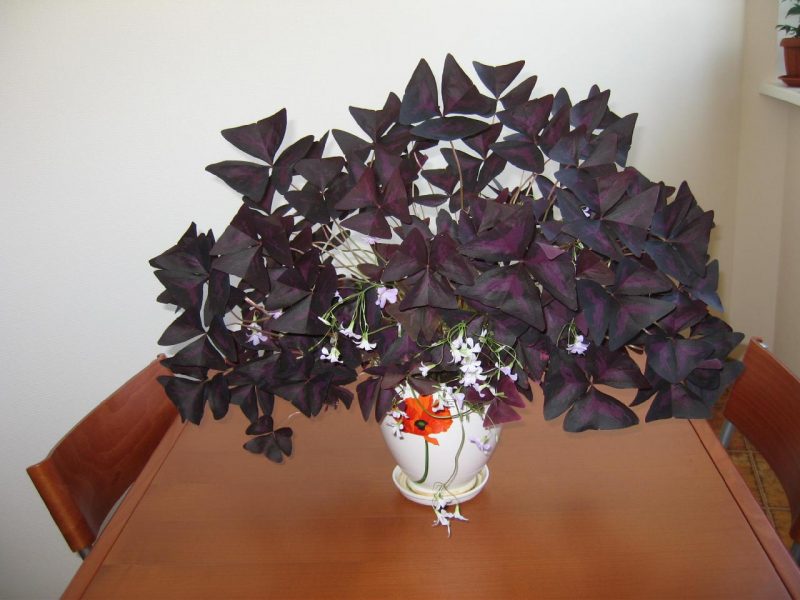
Oxygen is affected by diseases and pests only in cases when the regulation of the content of the flower is violated and care measures are not carried out correctly:
- Gray rot - a fungal disease begins to develop with systematic bays of a flower or the absence of a drainage layer. For treatment in the early stages, it is necessary to treat the acid with a fungicide. With intensive development, the acid is transplanted into a fresh substrate with a preliminary examination of the root system and removal of the affected areas.
- Spider mite, scale insects - with too dry air and weakened immunity, bushes populate sucking insects, which can be controlled by spraying with an insecticidal preparation.
Important! Processing the indoor flower must be carried out in the fresh air, after protecting the earthen lump from chemicals.
Possible growing difficulties
The main problems that can occur during cultivation of acid, are wilting and drying of the leaves.
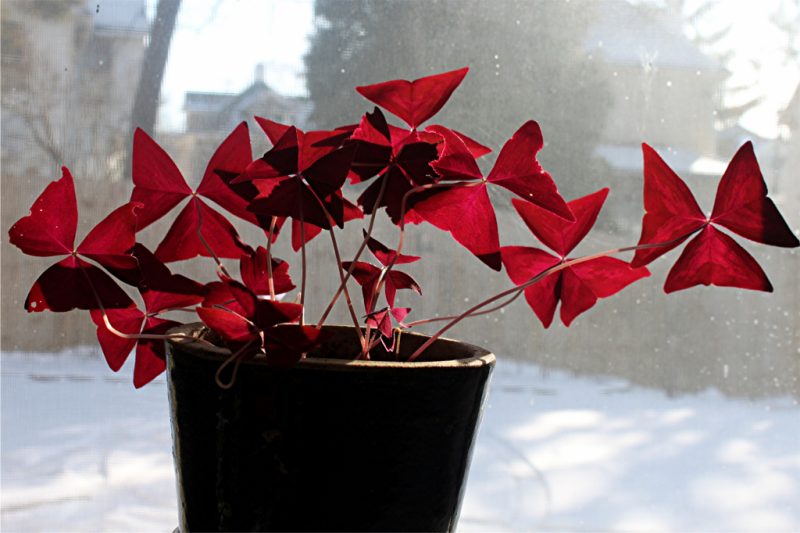
Possible reasons lie in:
- an excess of soil moisture, leading to the development of gray rot;
- extremely rare watering and too dry air in the premises;
- elevated temperatures;
- too depleted soil.
Thus, tender acidic with non-capricious character is truly a wonderful living gift, symbolizing comfort and prosperity.












